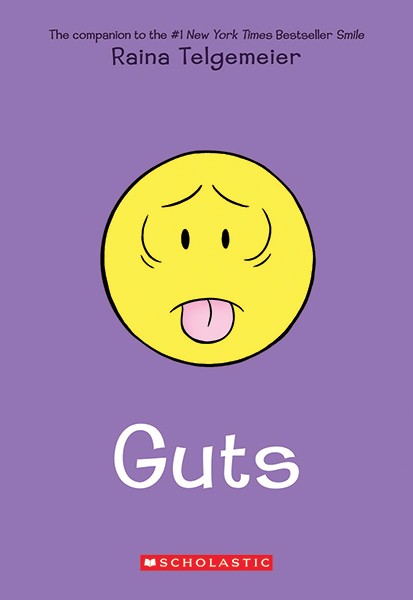Raina’s got guts
Graphic novels are having their moment. From David A. Robertson’s 7 Generations series to Raina Telgemeier’s memoirs, graphic novels are opening up new conversations for kids and adults, presented in new and interesting ways.
Telgemeier is a New York Times bestselling author and multiple Eisner Award winner behind such middle-grade (ages nine to 12) graphic novels as Smile, Sisters, Drama and graphic adaptations of The Baby-Sitters Club. Telgemeier released her latest work Guts to a sold-out crowd at the RBC Convention Centre on Sept. 28.

Nine-year-old Alice Christopher has been to three of Telgemeier’s Winnipeg releases and is a big fan.
Christopher says graphic novels have become super popular with middle-grade readers. Telgemeier’s writing is “really, really funny, and a lot of people would just read it for that, just for the funny part, but she can also be very serious about some things, and I think that is a good quality.”
Christopher prefers graphic novels to other books, “because you find out more things when you’re actually seeing through (the character’s) eyes,” she says.
“I’ve read a lot of autobiographies that weren’t graphic (novels), and once it’s graphic, you get inside the person’s head even more … I’ve read a lot of the Dear Canada series, and they are in diary form, but it is different than actual thoughts, because (with a graphic novel) you’ve gone into the person’s head.”
Christopher and her dad, Brandon Christopher, chair of the University of Winnipeg English department, are both big graphic novel fans. Brandon Christopher’s focus of academic research is on comic adaptations of Shakespearean plays.
“It is a different kind of reading,” he says. “There is a way you get trained as a reader in text-books ... where you get more hand-holding in good, old-fashioned, all-word (books) than you get in a graphic novel.
“I think comics invite us to do more work as readers in terms of how you put the story together ... I think they are harder to read than traditional novels are, and I think they force us to think in a different way, in a different dimension than traditional, text-based books.”
Unfortunately, Guts did not live up to Alice Christopher’s expectations.
“I’m not crazy about it,” she says. “I found it a little gross … I know people that loved it so much that they’ve read it, like, 18 times by now, and a lot of people like me did not enjoy it as much as her other books.”
Still, Telgemeier’s books teach important lessons accessible to adults and kids, Brandon Christopher says.
“It just says something about where we are now culturally about it being okay to talk about when things aren’t perfect, about when our bodies are making us unhappy,” he says.
When he was Alice’s age, he says, “that was not something we could do. I think (Telgemeier) is a part of helping to bring that about, but I think it is also a shift in culture generally. We are thinking more about making everyone feel like who they are and the way they are made is okay.”






